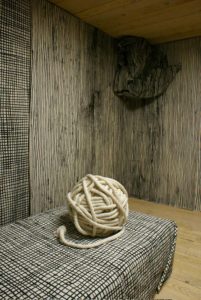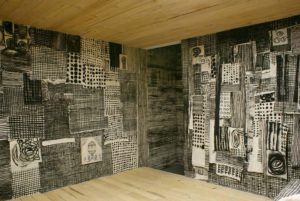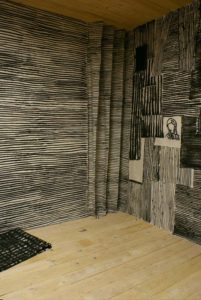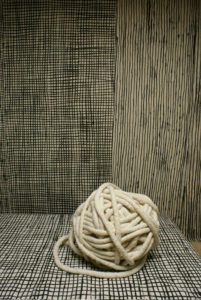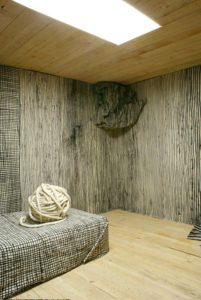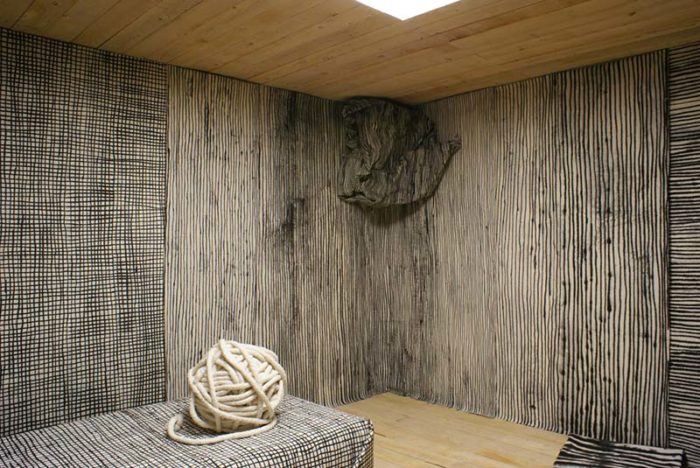
OPTICA un centre d’Art contemporain, Montréal 2010. Photo: Yan Giguère
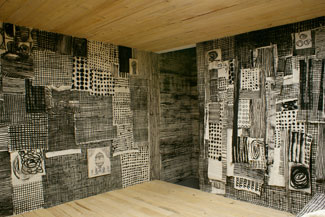
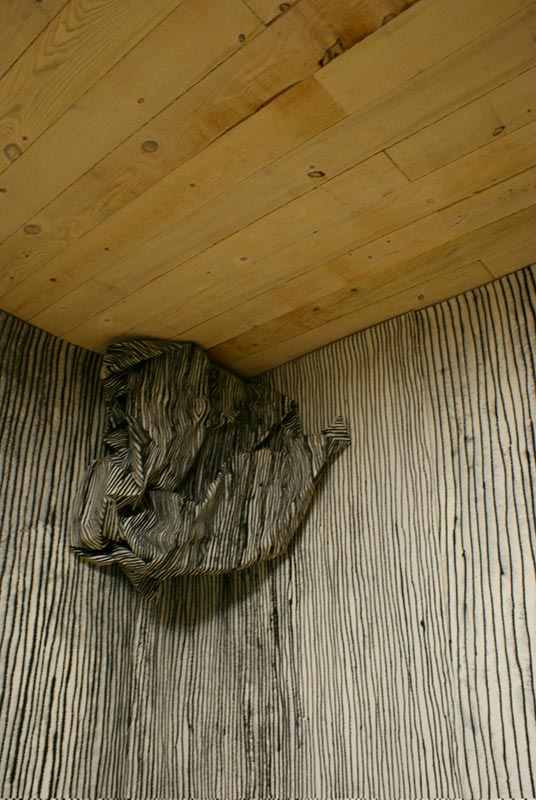
Photo: Yan Giguère
À propos de ce projet . About this project
Dans le ventre de la baleine
Optica, Montréal, 2010
FR
Dans le ventre de la baleine, montre un environnement pictural aux qualités tactiles, optiques et hypnotiques présentant le tableau comme un refuge enveloppant. Cette œuvre qui aborde encore les problématiques propres à la peinture est conçue comme un habitacle où je décline les notions de surface, d’apparence, d’enveloppe et de peau. Les références sont multiples et pas seulement picturales, car l’œuvre, qui proposent d’entrer dans la matérialité du tableau, entretient aussi certains liens par exemples avec le Merzbau de Schwitters, l’atelier de Brancusi, et la chambre de des Esseintes dans À rebours, le roman de Huysmans. C’est une construction utopique, où l’œuvre devient antre et coquille, un espace de rêverie et de transformation.
EN
Since the late 90s, the multiple interconnections between text and textile, playing with words, playing with shapes, which I depict in paintings, appear like a watermark in my pictorial research. In my latest works, I have explored the visual representation of the fabric supporting the painting itself (the canvas), depicted as drapery, veils, nets, and grids. I am particularly attracted to the idea that in paintings, under the representation of clothing, we do not paint the body. Similarly, in the painting itself, behind the curtain, under the veil, there is nothing else but the canvas.
Continuing a cycle that began in 2007 with Étang (Artefact 2007), I pursue the construction of pictorial environments whose tactile properties, optical and hypnotic, present the painting as an enveloping space allowing the viewer a refuge. These works, which address questions specific to painting, are conceived as rooms where I declame the notions of surface, appearance, exterior coat, and skin. My references are numerous and are not always pictorial. These works that explore the physicallity of painting are connected «in some ways», to other «œuvres» such as Kurt Schwitter’s Merzbau, Constantin Brancusi’s studio, or the room of Jean Des Esseintes in Huysmans’s novel À Rebours. These are utopian constructions, where the work itself becomes the antrum and the shell, a space for reverie and transformation.
Description des images
Dans le ventre de la baleine, vue partielle de l’installation.
Photos: Yan Giguère
